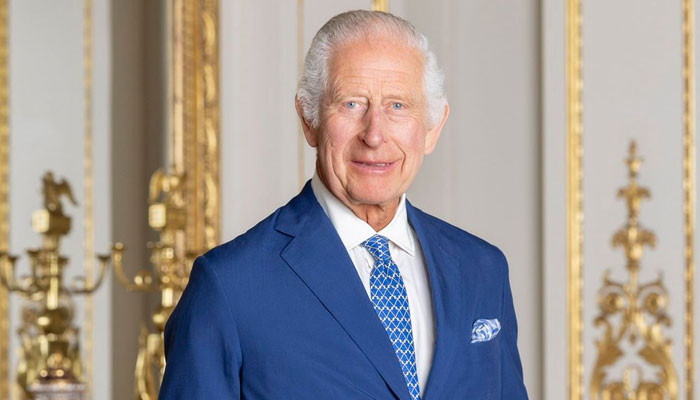Sports
In search of growth
字号+ Author:Smart News Source:Sports 2025-01-11 06:23:58 I want to comment(0)
THERE appears to be growing impatience within the government with the ongoing economic adjustment, and an itch to somehow kick-start growth. The itch grows out of the realisation that the most certain way to break the Imran Khan fever gripping the electorate is to provide at least a couple of years of rapid economic growth. But how to do this? In the past, Pakistan has produced brief growth spurts using injections — both foreign and domestic. Foreign liquidity has come in the form of and , with some assistance coming from steadily and . Three separate growth spurts were engineered using liquidity injections. One ran from roughly 2002 till 2007, before entering its terminal crisis in 2008. The second one ran from 2014 till 2017, before entering its terminal crisis in 2018. And the third ran from the middle of 2020 till 2021, before entering its terminal crisis in 2022. Each one of these had liquidity injections as their main motor force. In the first instance, it was that came from various sources, going far beyond the $12 billion in American funds between 2002 and 2008. In the second case, the inflows came in a very short burst in a few months in 2014, when a , a of $2bn, commercial borrowing by the government (of an undisclosed amount), rollovers on maturing oil payments, and from a telecom spectrum auction suddenly buoyed the reserves in a matter of weeks. Coupled with a sharp fall in the current account deficit under the auspices of an IMF programme, along with large inflows from the World Bank and Asian Development Bank, those months in the first half of 2014 posted one of the largest improvements in external sector outlook the country had seen in decades. “Since late 2001,” the State Bank in its third quarterly report for the year, “Pakistan has not experienced such a sequence of positive developments in the external sector.” This was even before the CPEC-related inflows began. The third major liquidity bonanza came with the . Just like 9/11 was a tragedy for most but a bonanza for the sitting government of Pakistan at the time, the pandemic proved more a blessing than a liability for the government. Immediately, the ongoing IMF programme was halted and the government’s hands untied in utilising the fiscal and foreign exchange buffers they had painstakingly built under the programme since July of 2019. That was coupled with an immediate , coupled with lumpy inflows from the World Bank and Asian Development Bank and a that took the pressure off debt-servicing costs significantly. It is possible to see the same reflexes, which drove earlier liquidity-fuelled growth booms, beginning to express themselves. The sources of the liquidity inflows were diverse in all three instances, but relied heavily on concessionary finance from the Bretton Woods institutions as well as bilateral sources. How the government used these inflows was common in all three episodes. They sharply and held the artificially low while hiking government spending and announcing “special incentives” for investment activity, whether via amnesty schemes or subsidised credit from the State Bank or even special subsidies on energy for “export-oriented industry”. The result in each case was a growth spurt that began almost immediately, as the idle capacity that was lying unutilised during the preceding period of economic adjustment suddenly kicked into motion. In all three cases, growth started within months. And in all three cases, growth stalled on the very same deficits that had driven their predecessors towards a . In all of them, massive liquidity injections were used to kick-start growth. This had two important consequences. The liquidity fuelled inflation on one side and trade deficit on the other, leading to a and mushrooming , followed by a return to a balance-of-payments crisis amid high inflation. There was no exception. Every growth spurt ended the same way. Once more, it is possible to see the same reflexes which drove earlier liquidity-fuelled growth booms beginning to express themselves. The desire to use the rebuilt foreign currency reserves to bring down the price of the dollar, for example, is lurking just beneath the surface. Just over a month ago, for instance, Deputy Prime Minister Ishaq Dar used the occasion of an address he had to give at the Pakistan China Institute to argue that the real value of the rupee should be at or below 240 to a dollar. His statement stirred much controversy and revived memories of August 2022, when he had used to dislodge the then finance minister and install himself instead, in a vain bid to bring down the exchange rate. But beyond Mr Dar’s dodgy , the thirst for liquidity is growing in the government as the consequences of a prolonged economic stagnation under an IMF programme begin to bite. Industry is clamouring for a in interest rates, a sentiment that is being echoed by ministers. The prime minister’s to Saudi Arabia are also an effort to try and pry some financial help from the kingdom, but has so far not borne fruit. As time passes, the fever will rise. Some indications along the way might pertain to whether they decide to go for unscheduled Eurobond floatation midyear, or if discipline in maintaining development outlays within target begins to wane. Pakistan has never had a growth episode that has not been driven by injections of foreign liquidity and there is no reason to believe that is about to change anytime soon. The mind and thinking of policymakers in this country does not extend beyond this. The ongoing economic adjustment under the will lose support at an accelerating clip in the months to come. But the groundwork for a revival of growth has not been laid. And therein lies a big problem.
1.This site adheres to industry standards, and any reposted articles will clearly indicate the author and source;
 Related Articles
Related Articles-
سائم ایوب کو آئی سی سی مینز ایمرجنگ کرکٹر آف دی ایئر 2024 کے لیے نامزد کیا گیا
2025-01-11 06:08
-
Ravi Shastri anticipates Rohit Sharma’s Test cricket exit
2025-01-11 05:12
-
Saim Ayub suffers ankle injury during second South Africa Test
2025-01-11 04:31
-
Saim Ayub suffers ankle injury during second South Africa Test
2025-01-11 04:00
 User Reviews
User Reviews Recommended Reads
Recommended Reads Hot Information
Hot Information- پہلی ٹیسٹ: پاکستان کے 211 کے بعد جنوبی افریقہ کے تین کھلاڑی آؤٹ، مارکرام نے مزاحمت کی
- Saim Ayub suffers ankle injury during second South Africa Test
- Rickelton’s double ton powers South Africa to 429-5 against Pakistan
- Second Test: Rickelton, Bavuma stabilise South Africa at 316/4 on day 1
- ویرات کوہلی پر کانستاس کو کندھے سے دھکیلنے پر جرمانہ اور آن لائن تنقید کا سامنا ہے۔
- Rickelton’s double ton powers South Africa to 429-5 against Pakistan
- Ravi Shastri anticipates Rohit Sharma’s Test cricket exit
- Rickelton’s double ton powers South Africa to 429-5 against Pakistan
- آسٹریلیا نے مارش کو ڈراپ کیا، پانچویں بھارتی ٹیسٹ کے لیے ویبسٹر کو ڈیبیو دیا
 Abont US
Abont US
Follow our WhatasApp account to stay updated with the latest exciting content













